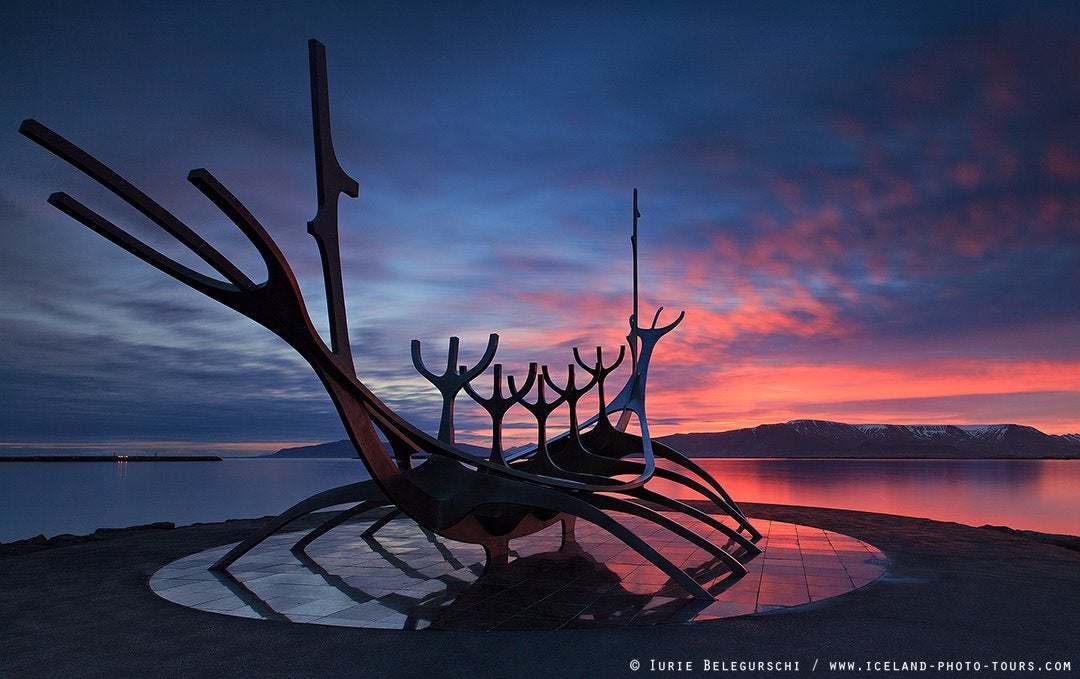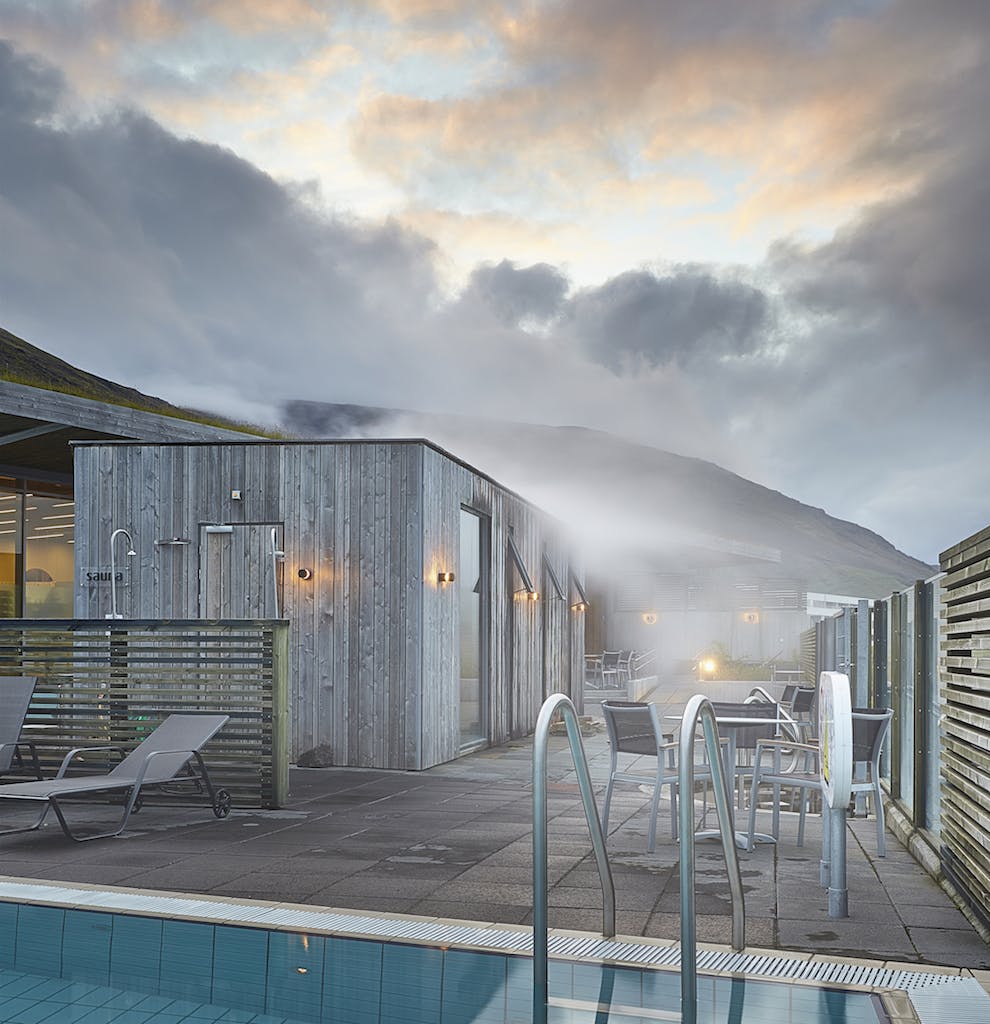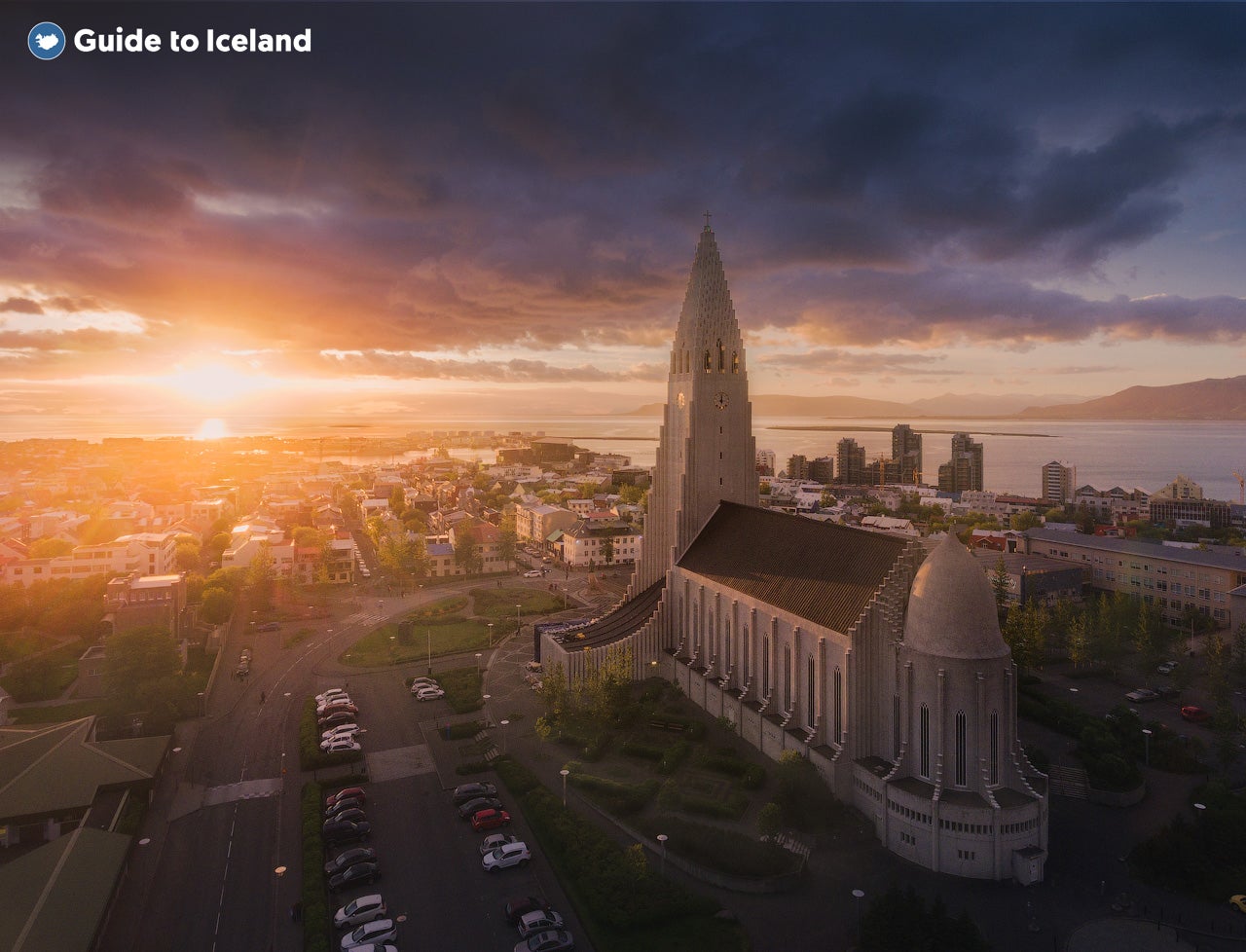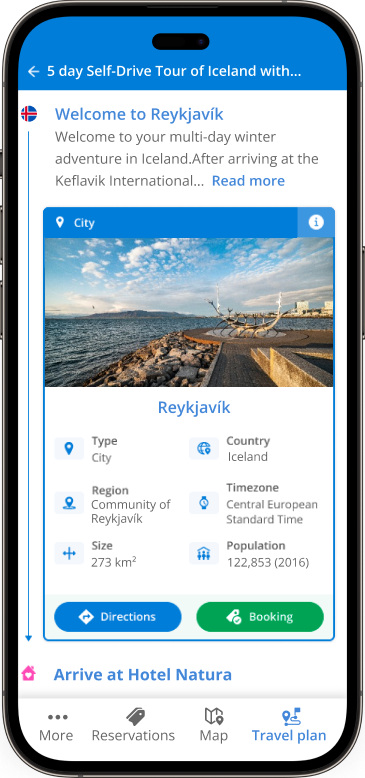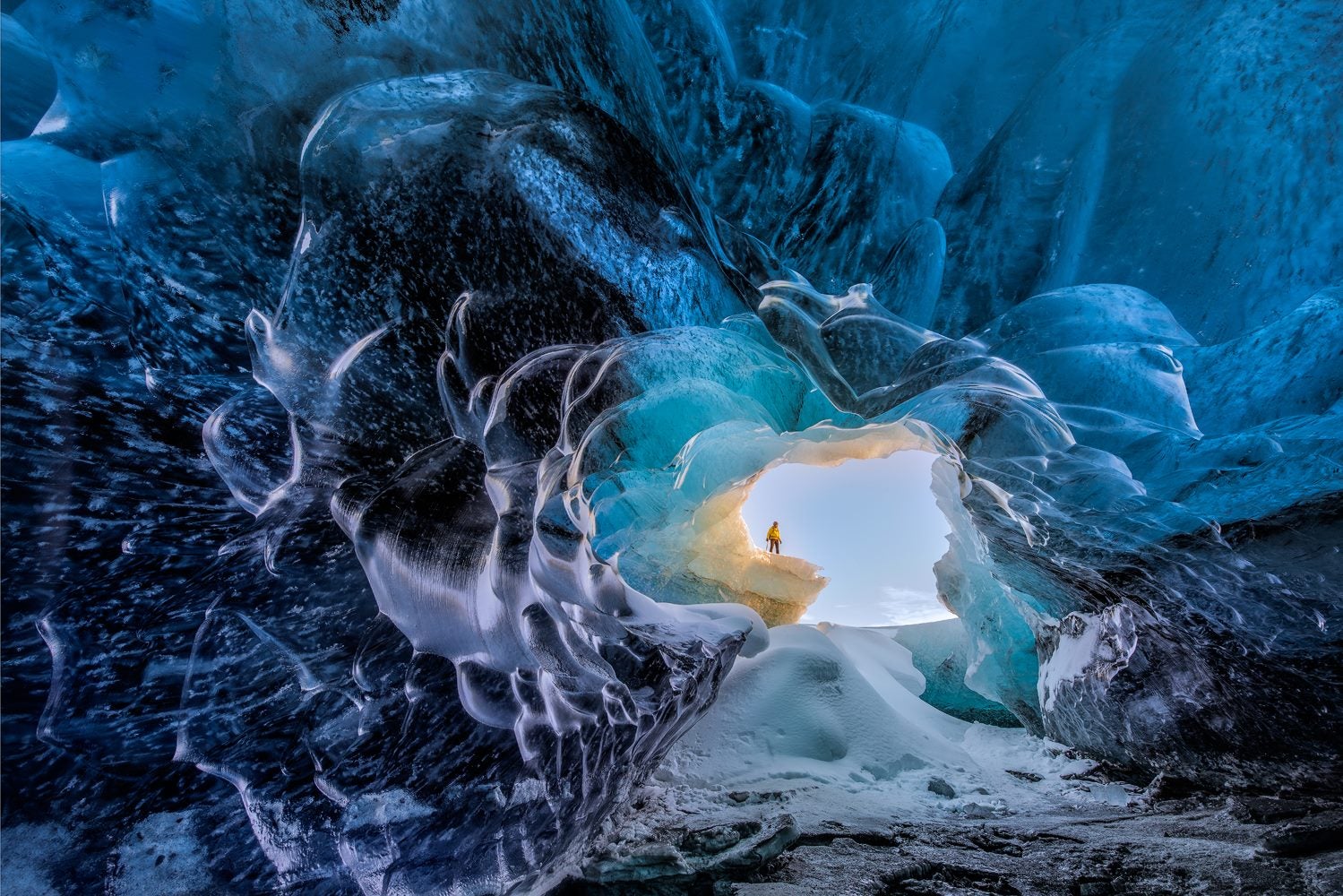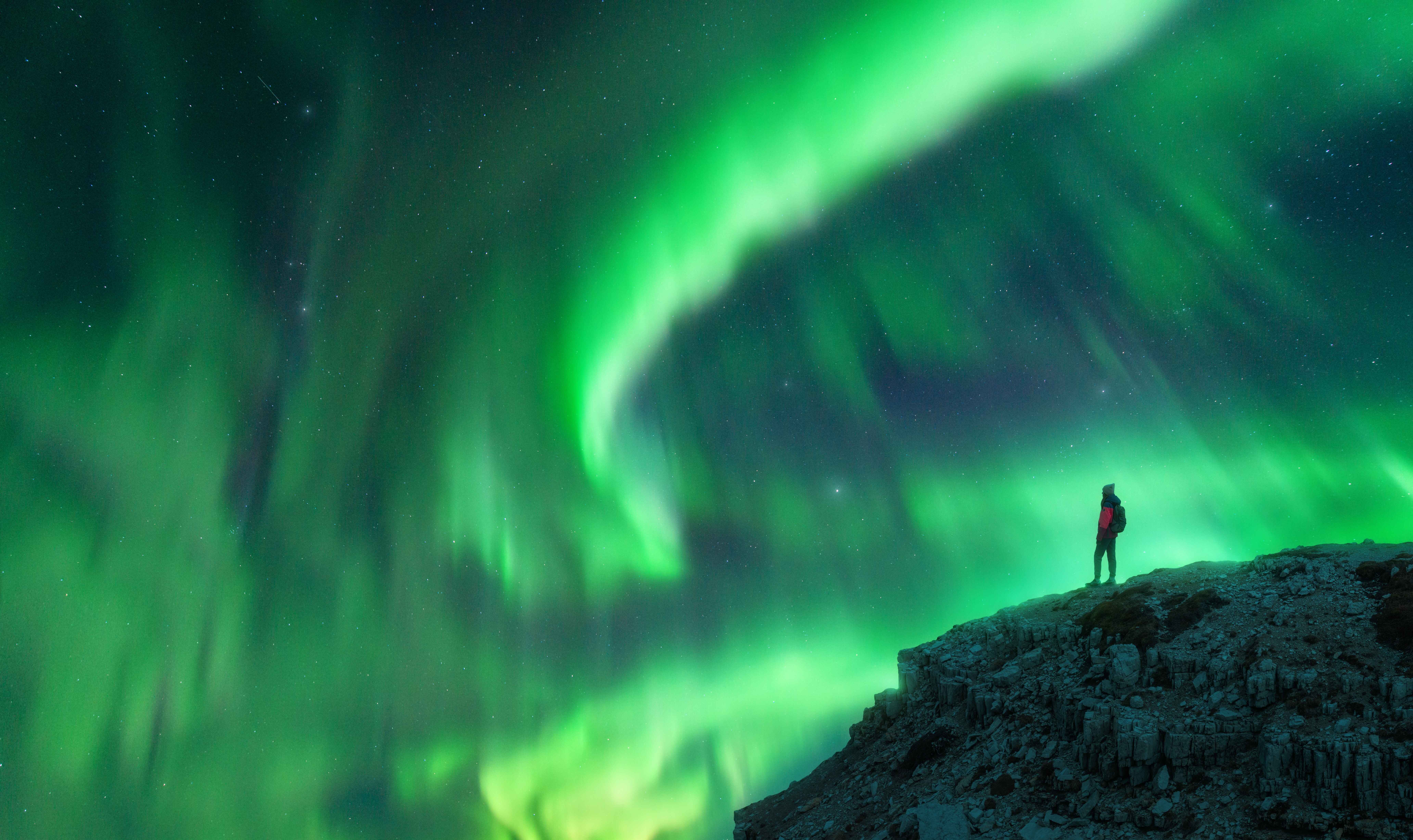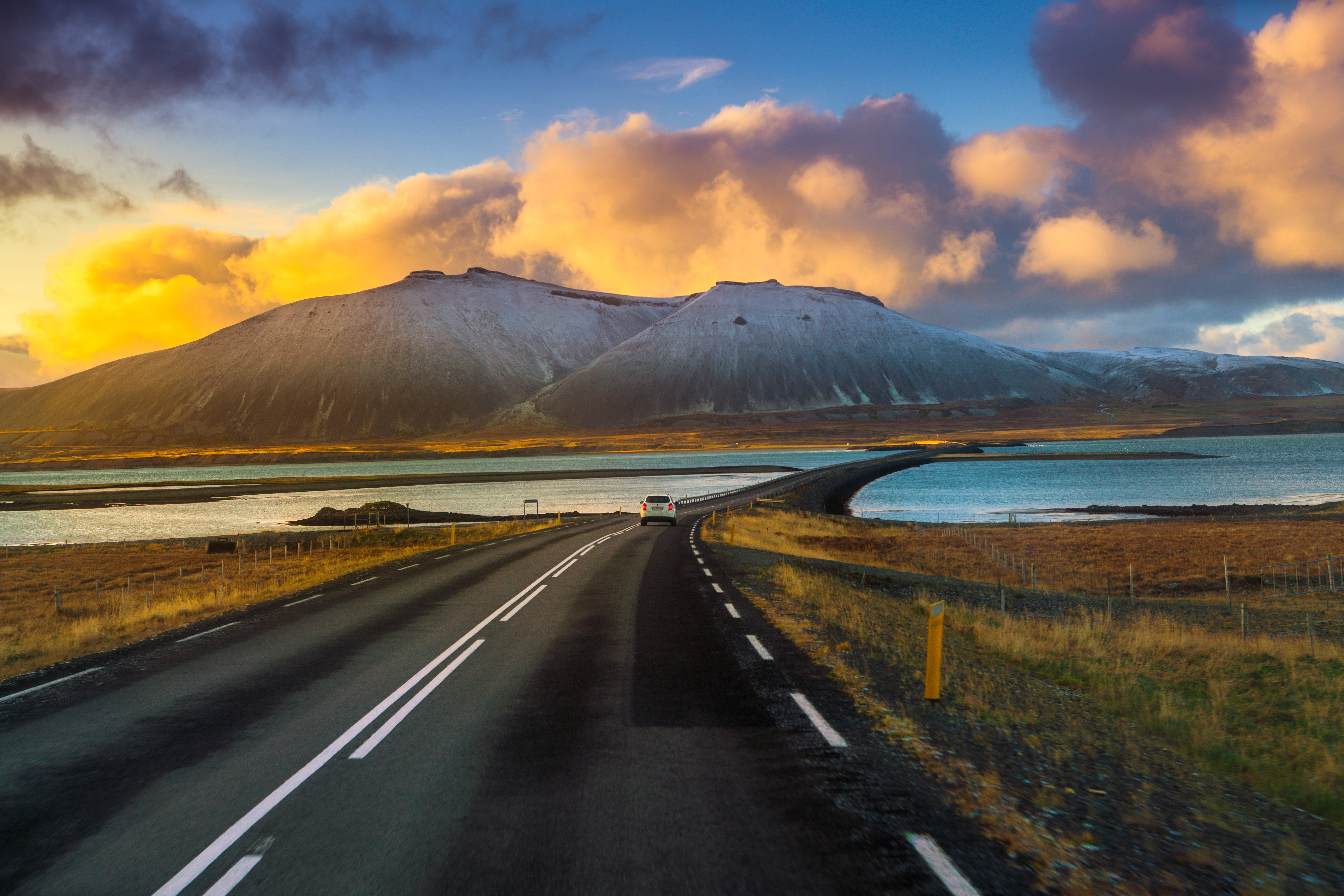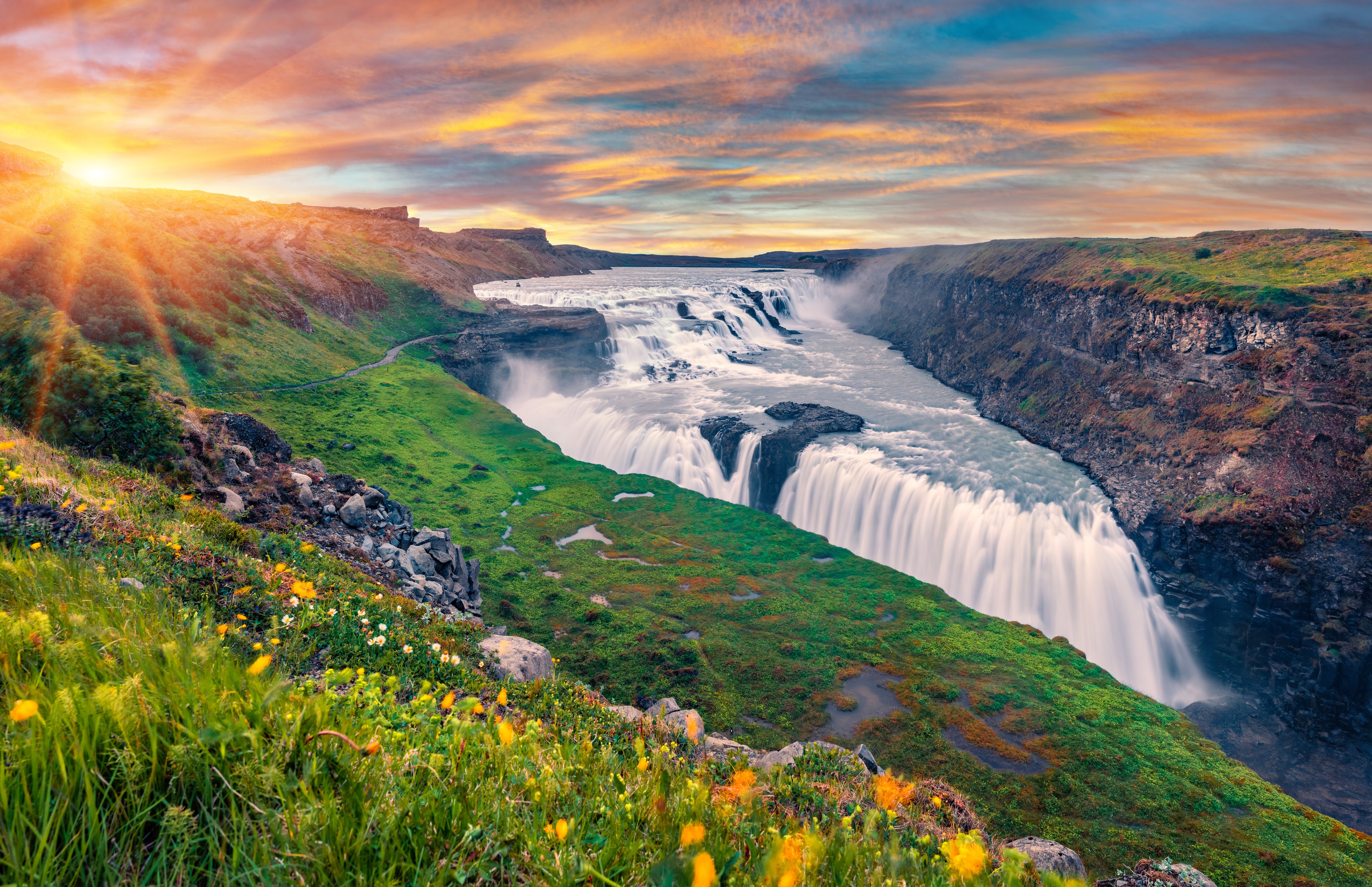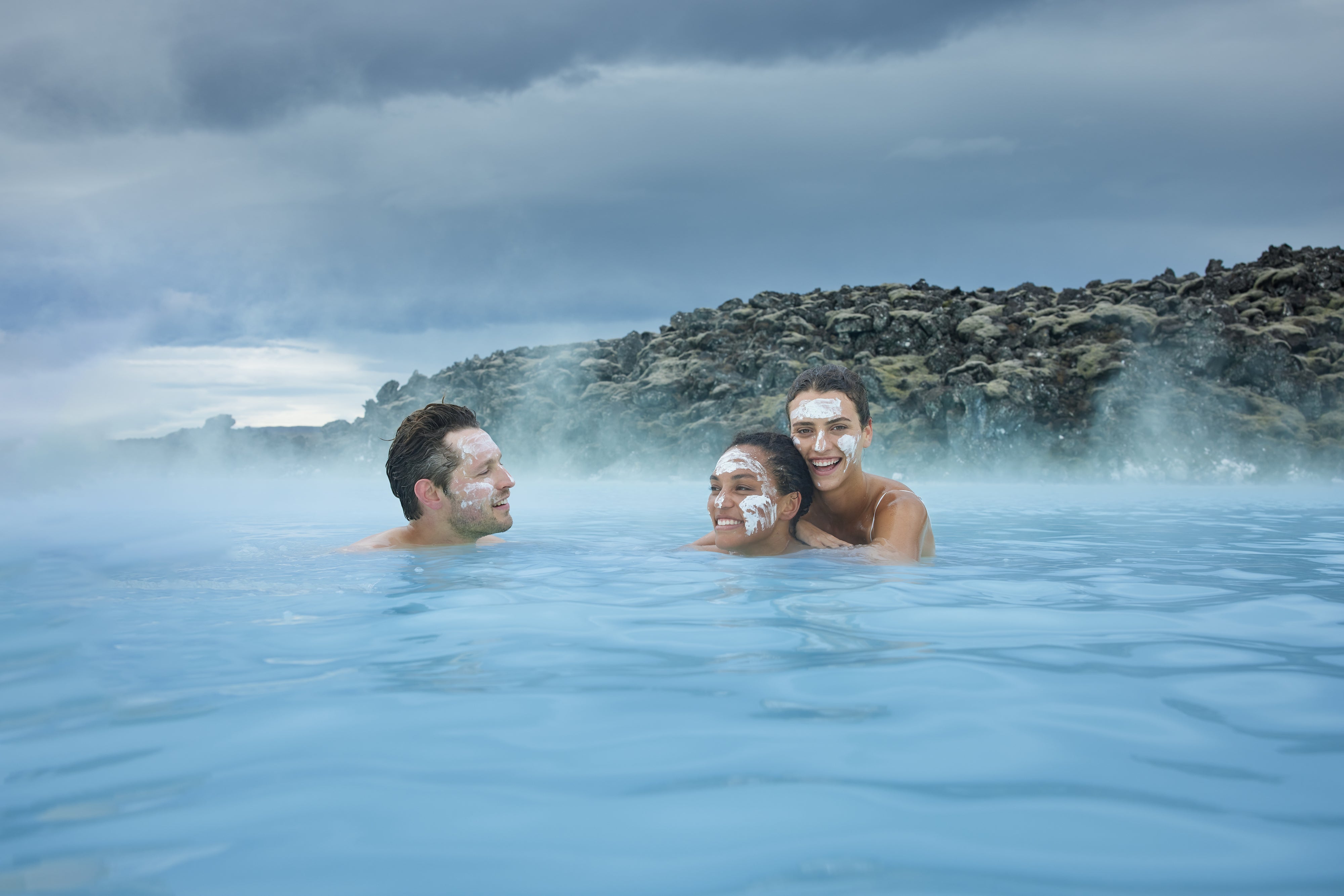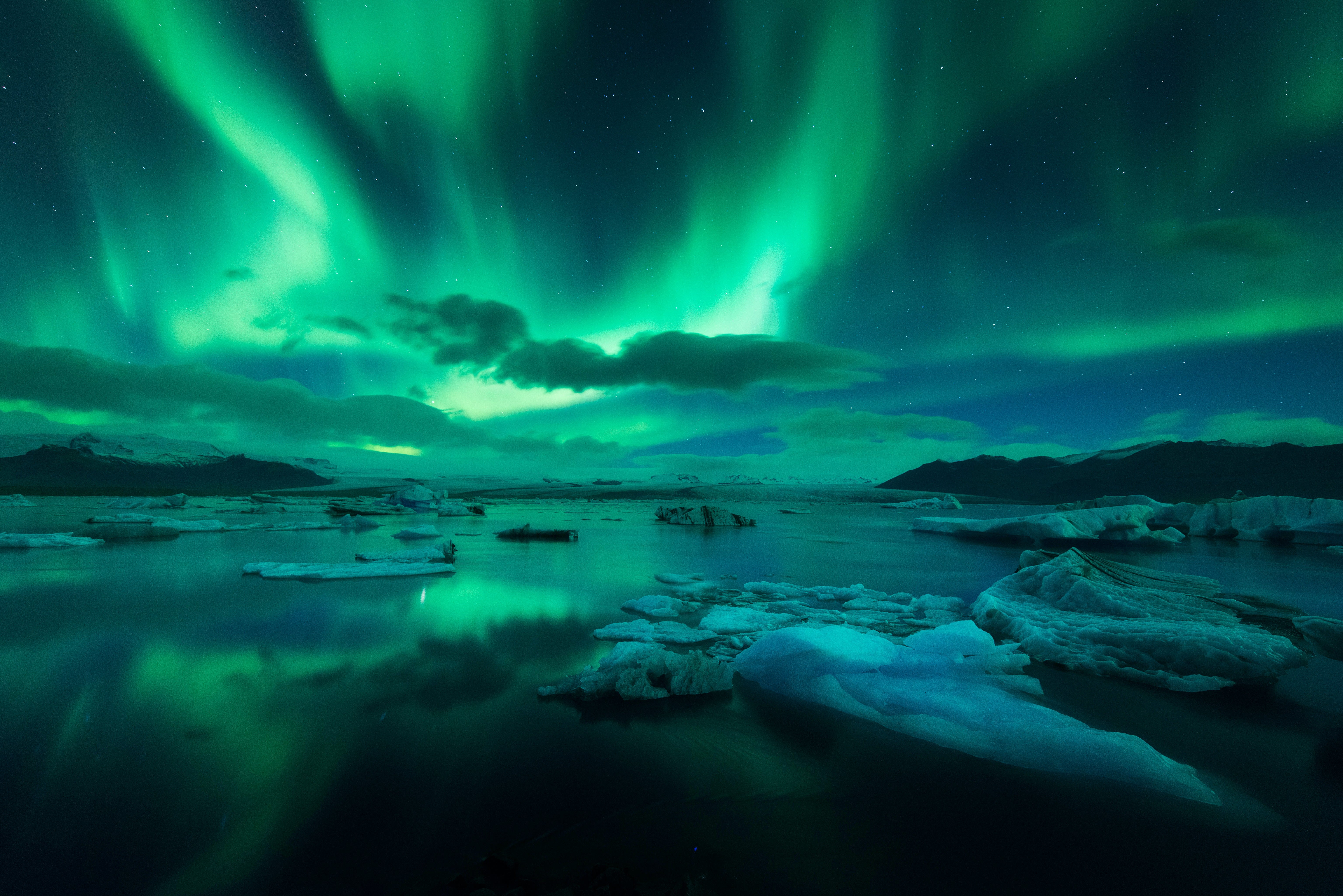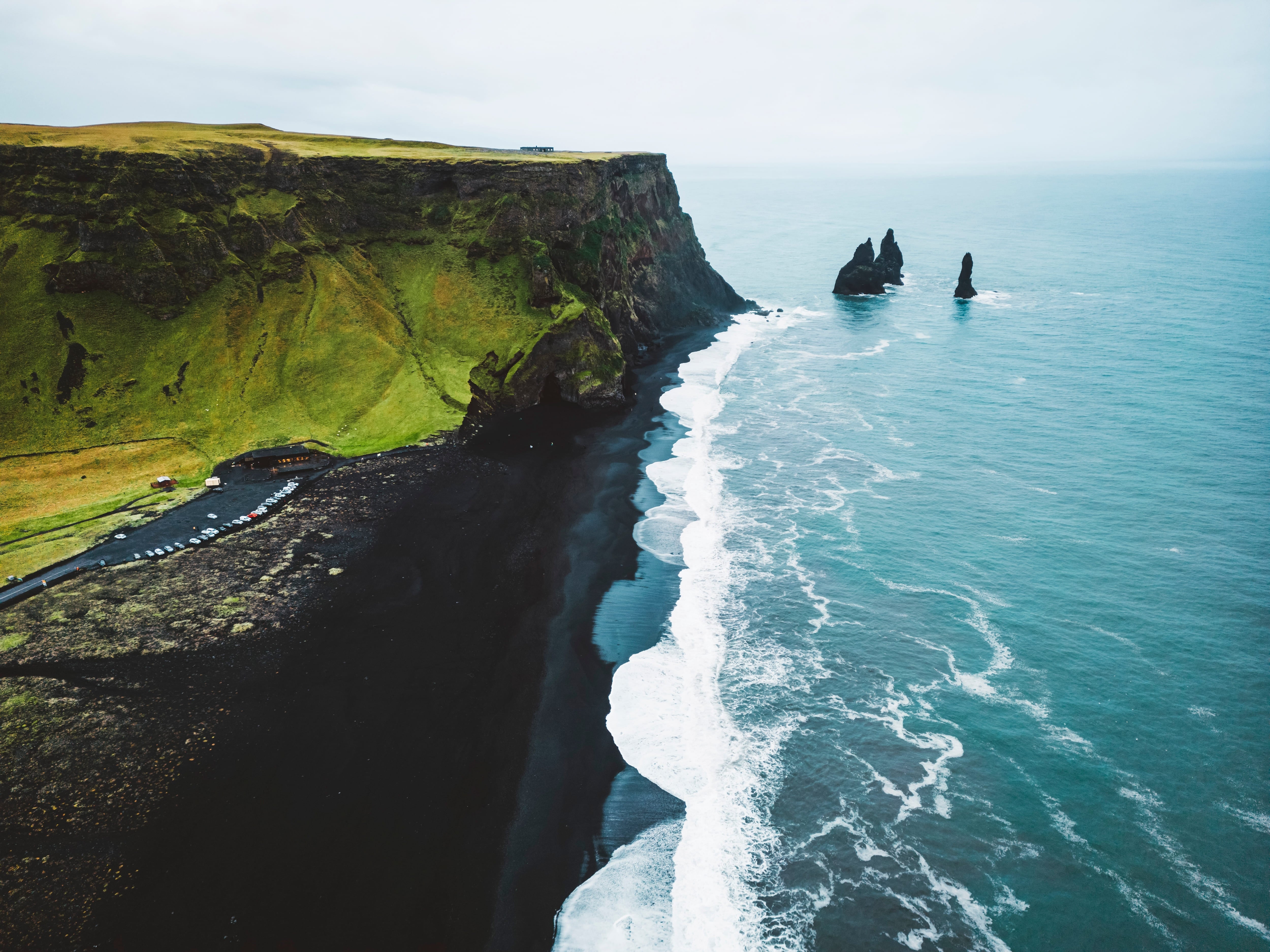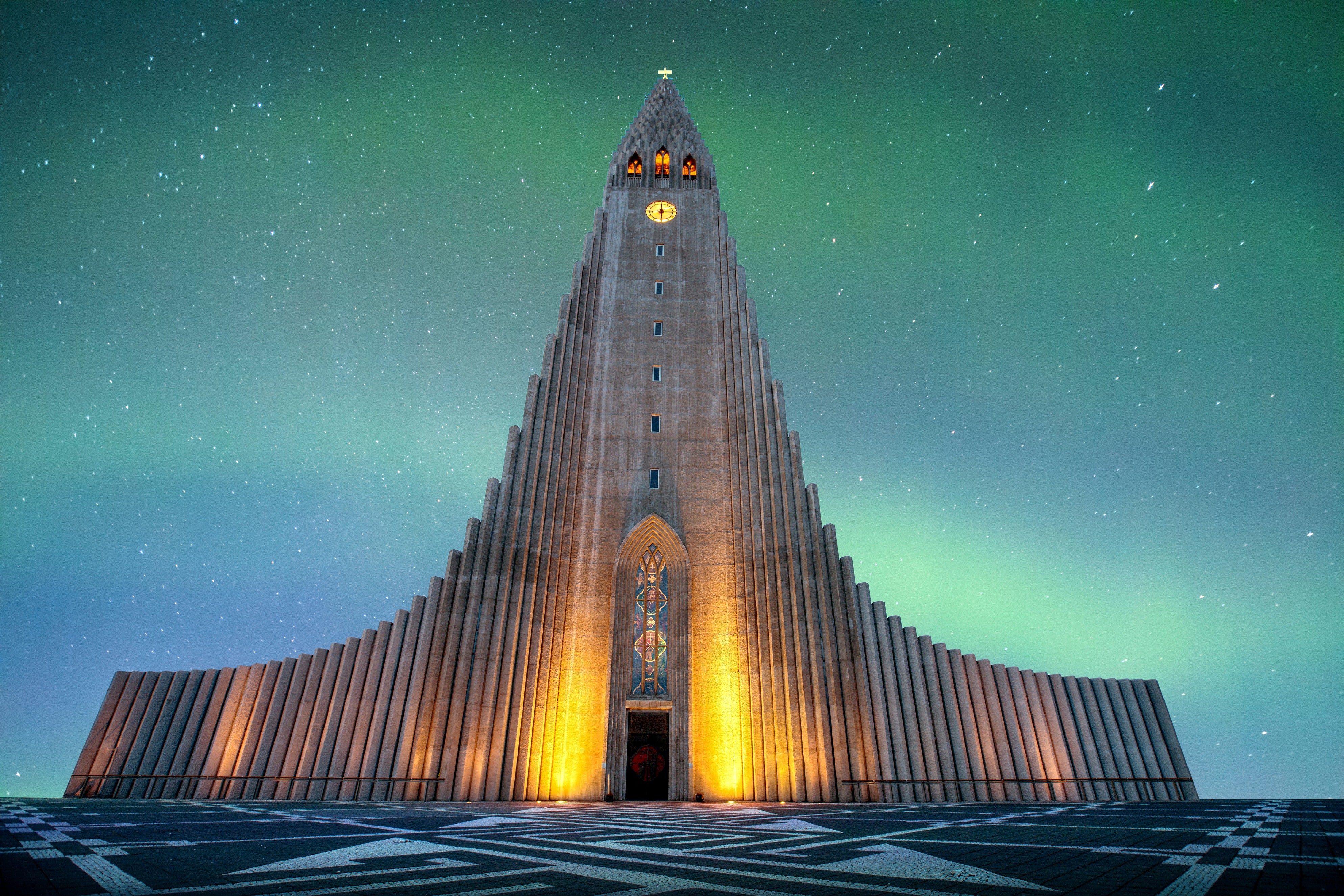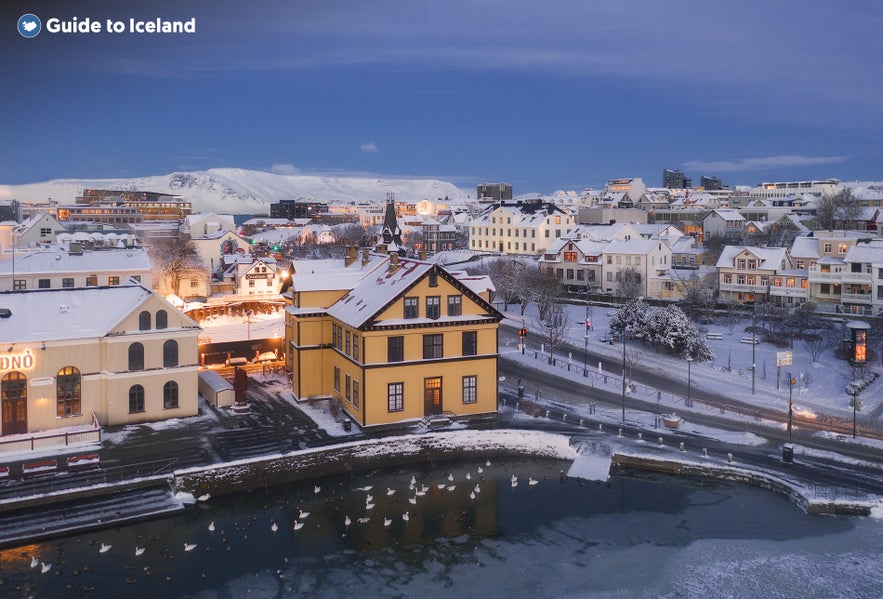
Find the best things to do in Reykjavik in winter. From city sightseeing on a hop-on hop-off bus tour to heading out on a whale-watching tour, there are plenty of things to do in Reykjavik during the colder months. Read on to discover top attractions, tips, and more.
Visiting Reykjavik in winter is a fantastic way to discover how Iceland celebrates Christmas and other winter festivities. There are also plenty of indoor and outdoor activities in which you can participate.
Why You Can Trust Our Content
Guide to Iceland is the most trusted travel platform in Iceland, helping millions of visitors each year. All our content is written and reviewed by local experts who are deeply familiar with Iceland. You can count on us for accurate, up-to-date, and trustworthy travel advice.
Although the temperatures are colder, the famous spots are still easy to see. From visiting the various museums and parks to heading off on a northern lights tour, many places are waiting to be explored.
Fewer people visit the city during winter, so most places are less crowded, meaning you’ll be free to explore Reykjavik in your own time. Around the winter solstice (late December), Reykjavik gets roughly 4–5 hours of daylight, so plan your outdoor sightseeing for the middle of the day and enjoy the city’s cozy culture after dark.
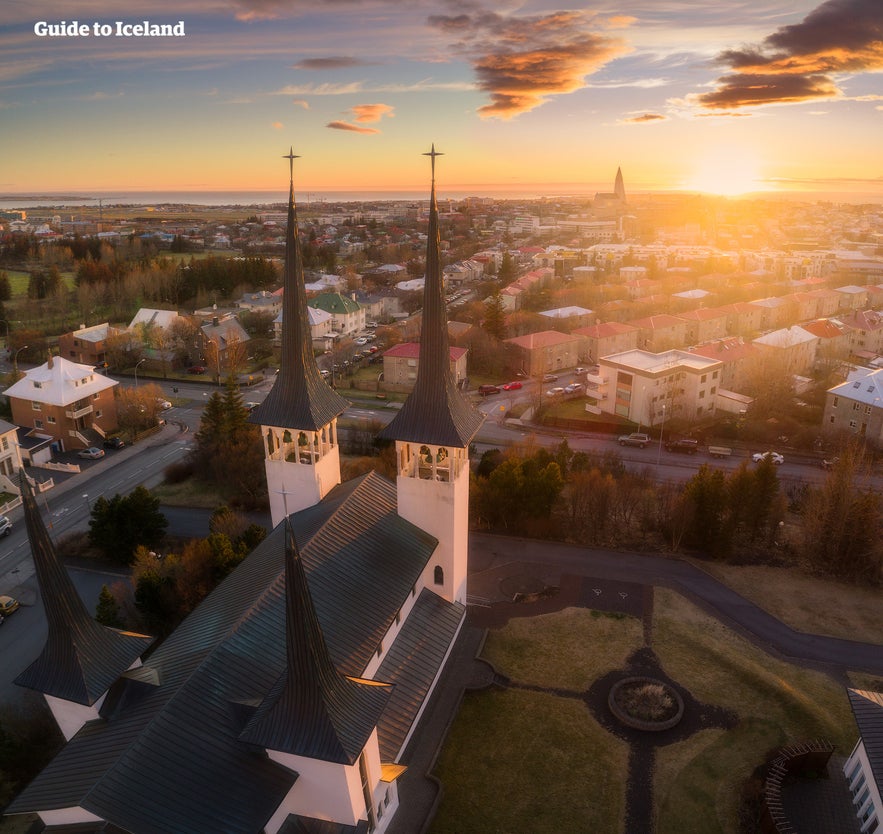
When visiting the city for the first time, finding the best things to do in Reykjavik in winter can be a little daunting. However, with this guide, discovering the best winter activities, Reykjavik tours, and places to visit is easy. Read on to find out how to spend your time in Reykjavik in winter.
City Sightseeing in Reykjavik in Winter
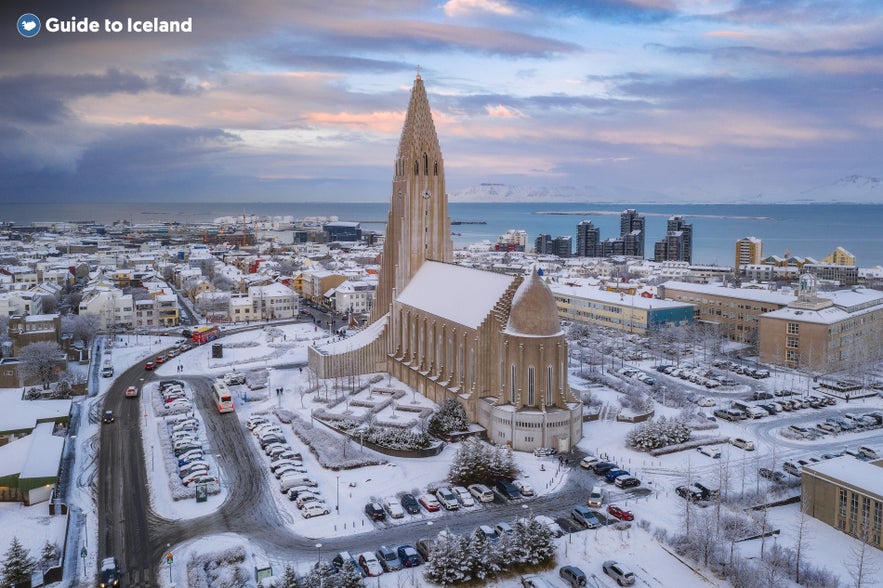
The days may be short in Reykjavik in winter, but the city has plenty of sights to explore in daylight and once it gets dark.
There’s no better way to explore Reykjavik than sightseeing in the city. Visiting the most famous sights allows you to learn about the city’s history and culture while discovering new places. You can go city sightseeing alone, on a hop-on, hop-off bus tour, or on a guided walking tour.
The Harpa Concert Hall and Conference Center is a great place to make your first stop. Admire the magnificent concert hall, which houses the Iceland Opera and the Iceland Symphony Orchestra. You could also check if there are any concerts you’d like to attend while you're here and book them for later.
The design of the building itself is fascinating. It’s worth viewing it from outside, even if you don’t venture indoors. The architecture was a collaboration between Danish-Icelandic artist Olafur Eliasson and Henning Larsen Architects.
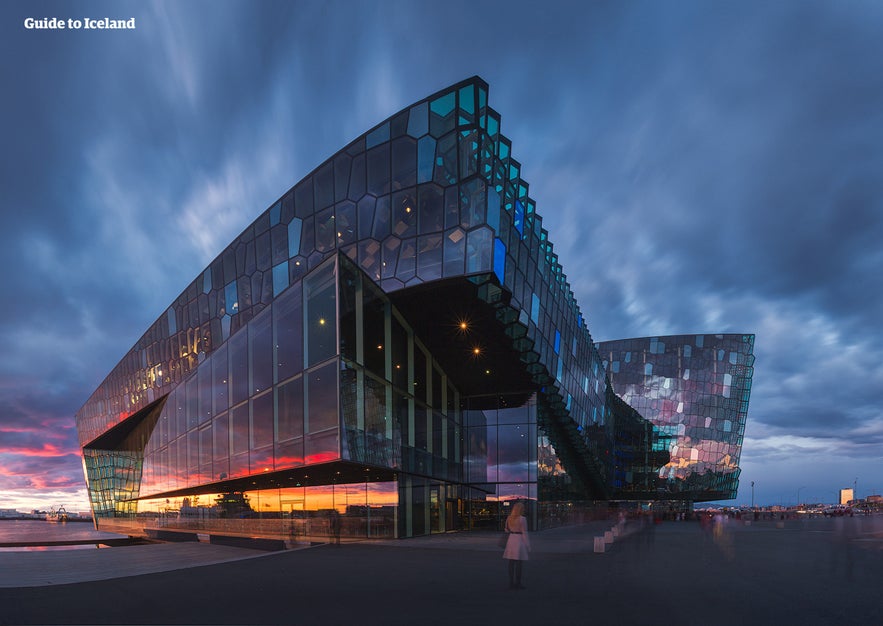
The Hallgrímskirkja church is an eye-catching building with a 245-foot (74.5-meter) spire inspired by basalt lava columns. It’s the tallest building in Reykjavik and the second-tallest in all of Iceland.
Visitors can access the church's observation tower via a lift. It offers stunning panoramic views over the city, so it's well worth a visit. There's a small fee for this, which goes towards the upkeep of the church.
Don’t miss Austurvöllur Square, a popular meeting place in the center of Reykjavik. Around the square, you’ll see the Icelandic parliament building, cafes, shops, hotels, and bars.
At the center of the square, you'll see a statue of Jón Sigurðsson, the leader of the 19th-century Icelandic independence movement and a national hero.
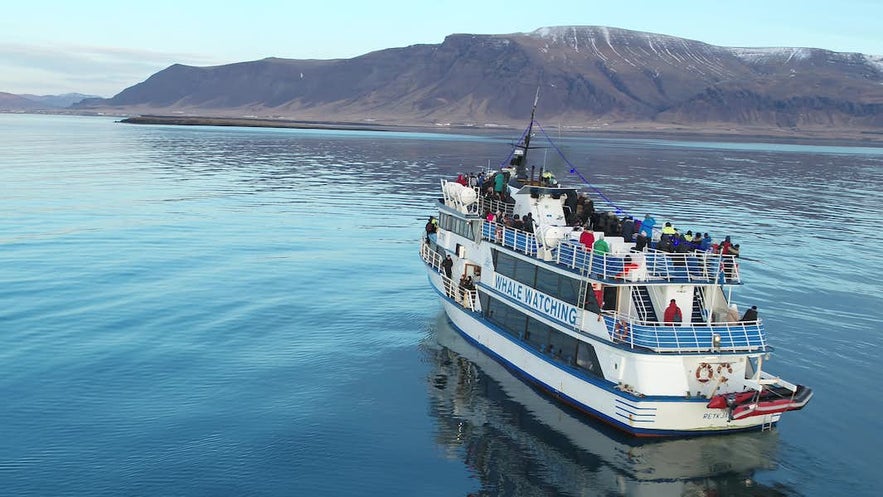
Photo from Reykjavik Whale Watching Tour
The Reykjavik Old Harbor is the departure point for whale-watching tours and northern lights cruises, but the harbor itself is also an excellent place to visit. You'll see incredible views of the natural landscapes surrounding Reykjavik, including Mount Esja, the Snaefellsnes Peninsula, and the Reykjanes Peninsula.
Also near the Old Harbor is the Sun Voyager sculpture, one of Iceland’s most famous artworks. It's one of the most visited sites in Reykjavik and represents a vessel of dreams, including hope, progress, and freedom.
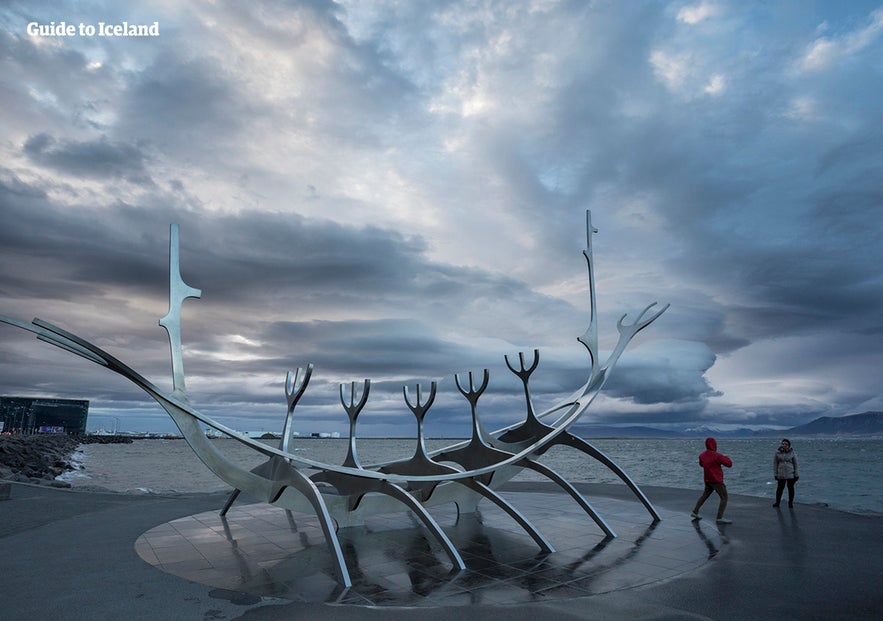
If shopping is part of your travel itinerary when visiting Reykjavik, head to Laugavegur. It’s the city’s main shopping street, full of renowned boutiques, bars, and restaurants.
You can buy clothes, jewelry, antiques, and much more. Many tourist shops also sell books, fridge magnets, stuffed animals, and souvenirs to take home to your friends and family.
You can also pop into two quirky museums near Laugavegur. The Phallological Museum started as an eccentric Icelander’s hobby but is now recognized as the world’s only museum dedicated to understanding male animals’ genitals. The second is the Icelandic Punk Museum, housed in a former public toilet block where each stall covers a slice of Iceland’s punk and new wave history.
The Best Tours in Reykjavik in Winter
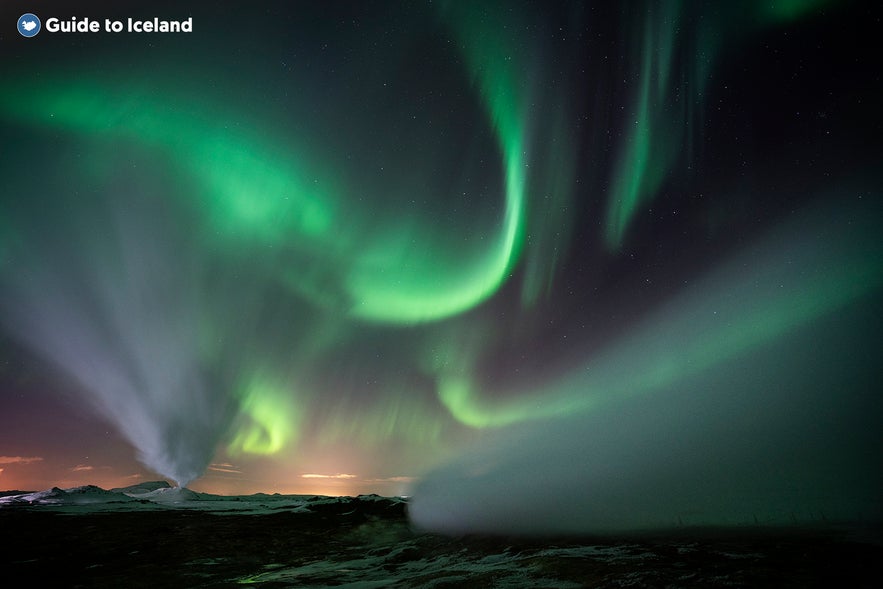
Winter in Reykjavik is an excellent time to experience Iceland’s dramatic landscapes and natural wonders, including the famous aurora.
The northern lights appear between September and April, but Reykjavik itself is often too bright to see them clearly. That’s why joining guided northern lights tours is the best way to maximize your chances. Tour operators monitor weather and solar activity to take you to the darkest areas with the best chance of a sighting.
A classic guided northern lights tour by bus is a great budget-friendly option, taking you out of the city to improve your chances of seeing the aurora. If you prefer a smaller group and want to capture the moment in more than your memory, a northern lights tour by minibus with free photos and refreshments is the best choice.
For the most adventurous travelers, a northern lights tour by super jeep offers a thrilling ride into Iceland’s remote landscapes, with free photos also included. Another way to see the aurora is on the water. With a northern lights boat cruise from Reykjavik, you can sail beyond the harbor and enjoy an unobstructed view of the sky with minimal light pollution.
Beyond northern lights hunting, Iceland’s winter landscapes offer plenty to explore. A 5-day northern lights winter vacation package combines aurora hunting with visits to frozen waterfalls, ice caves, and the Blue Lagoon, offering a well-rounded winter itinerary.
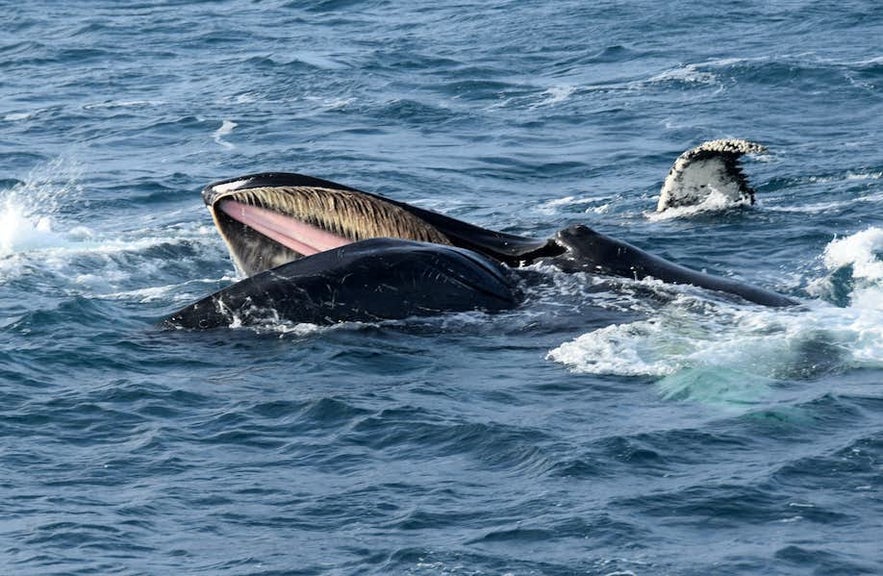
Photo from Reykjavik Whale Watching Tour
Iceland is known for its rich marine life, and whales are one of the species that can often be seen off its coastline. Iceland is home to more than 20 whale species, including minke and humpback whales. Taking a whale-watching tour from Reykjavik harbor is the best way to get a close view of the animals.
If you’re visiting in winter, the most frequently seen cetaceans are typically year‑round residents like white‑beaked dolphins and harbor porpoises, with occasional sightings of humpbacks and, more rarely, orcas. Bring warm layers and a windproof outer layer so you can enjoy the deck comfortably.
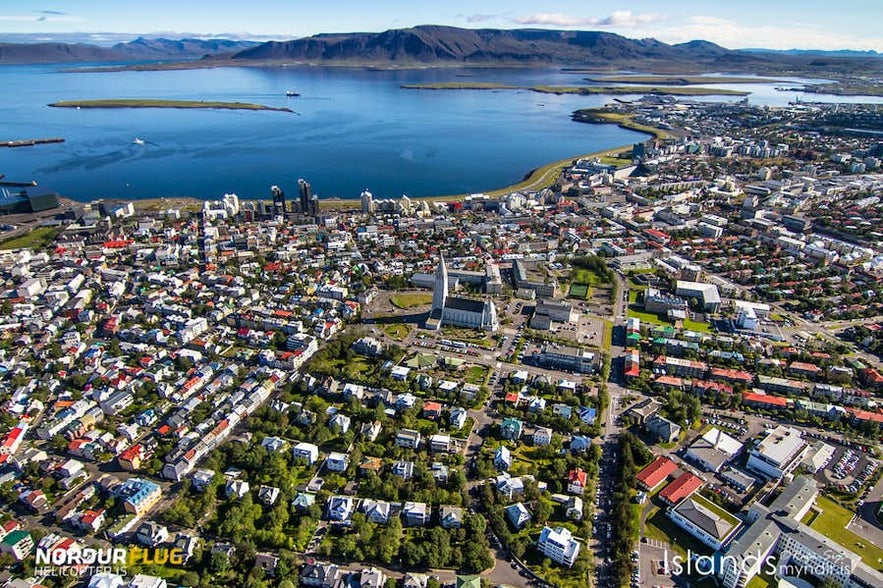
Photo from Reykjavik Helicopter Tour with Mountain Summit Landing
Want to enjoy a bird’s-eye view of Reykjavik? Go on a helicopter tour with a mountaintop landing. You’ll get to see the stunning city skyline and Reykjavik’s unique features from the sky.
This exciting tour also lets you view famous tourist attractions like the Harpa Concert Hall and the Hallgrímskirkja church from above. Some say that this view of Reykjavik looks like a giant patchwork quilt because of the colorful tin roofs.
You can even combine a helicopter flight with a whale-watching adventure if you want to tick two experiences off your bucket list.
Outdoor Activities in Reykjavik in Winter
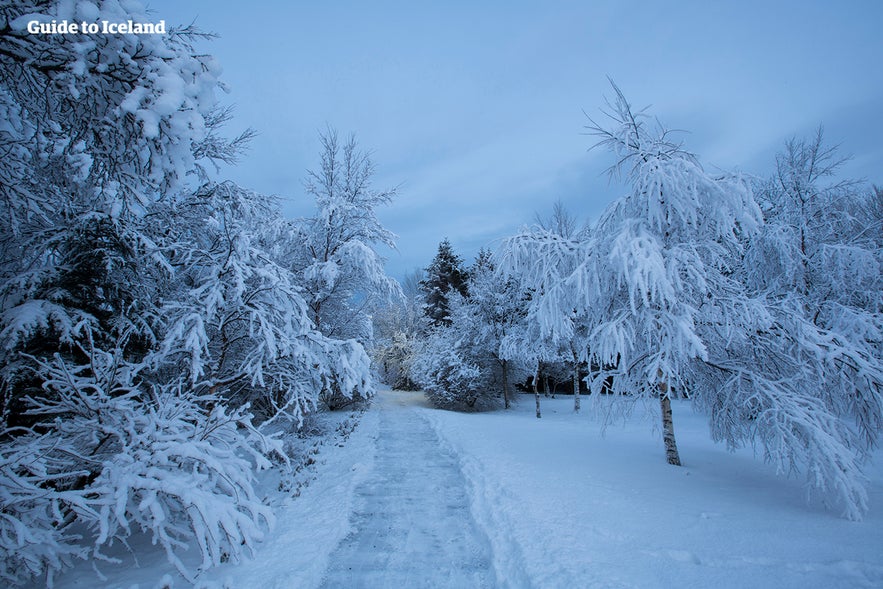
You don’t have to pass up on favorite outdoor activities like swimming just because it’s winter. Communal swimming and bathing in geothermal waters are part of Icelandic culture. The geothermally heated pools allow you to swim while relieving stress and soothing any aching muscles.
One great place to take a dip in soothing waters is the Sky Lagoon. The Sky Lagoon has a geothermal pool with natural hot water running through pipes, mixed with cold water, and then piped into the lagoon.
The water temperature in the Sky Lagoon is around 100 to 104 F (about 38 to 40 C). Its seven‑step Sky Ritual (Skjól) helps you relax and unwind. First, take a dip in the lagoon, then drop into the cold plunge at the lagoon's edge before spending five to ten minutes warming up in the ocean‑facing sauna. Continue with the cool mist, body scrub, and steam room before showering and returning to the lagoon. Minimum age is 12, and guests aged 12–14 must be accompanied by an adult. The best way to enjoy this is by booking premium admission to Sky Lagoon.
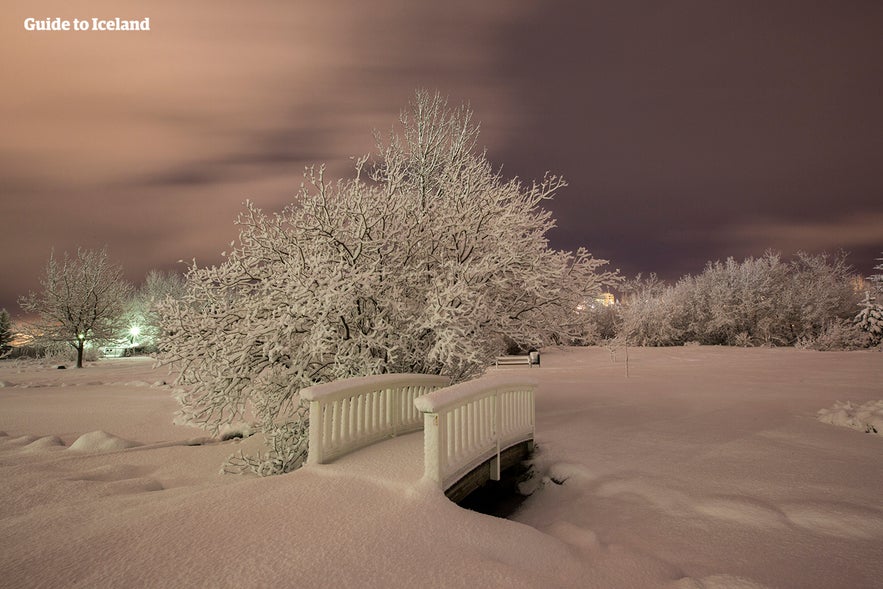
Reykjavik is home to some beautiful parks that are great for exploring, even in winter. Start with Laugardalur, an area well known for its recreational activities. It's home to an adjoining swimming pool called Laugardalslaug, the largest pool in Iceland.
The swimming pool has a water slide and geothermal hot tubs, making it the perfect place to relax and unwind in warm waters. You can participate in or watch sporting activities at the park if you don’t want to get wet. Popular sports here include handball, basketball, and football.
Hljómskálagarðurinn is another park worth visiting. Located beside Tjörnin pond, it’s the perfect family-friendly park and an excellent place for spotting freshwater birdlife. It’s one of the city's busiest parks, but it sees fewer visitors in winter, so you won’t be overwhelmed by summer crowds. On clear, dark evenings, you might even glimpse the northern lights.
Klambratún park is also a nice place to visit and is a favorite spot for locals thanks to its vast size and residential setting. It's located close to downtown Reykjavik and has many facilities.
You'll find a playground for kids and courts for football, basketball, and ultimate frisbee. At the park's center is the Kjarvalsstaðir Art Museum, one of three buildings that compose the Reykjavik Art Museum, showcasing the country’s best sculptors and painters.
Cultural Activities in Reykjavik in Winter
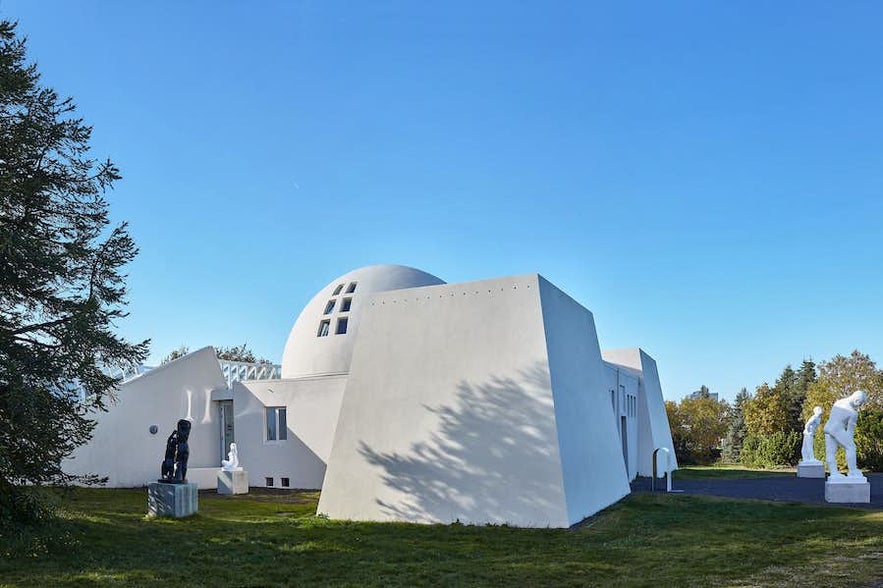
Photo from Reykjavik City Card - 72 Hours
There are plenty of cultural activities all year round in Reykjavik. A Reykjavik City Card grants visitors access to the city’s top museums and galleries for a discounted price. You can book a 24-hour, 48-hour, or 72-hour card.
A trip to Reykjavik isn’t complete without visiting the Perlan Museum. The building sits atop Öskjuhlíð hill, giving you a bird’s‑eye view of the entire city. You might also catch a glimpse of the northern lights from the museum.
Grab an admission ticket to the museum's Wonders of Iceland Exhibition and step into the Perlan Ice Tunnel, a man‑made ice cave where you'll feel like you're walking in a glacier. The 10‑minute walk is breathtaking, but be sure to wear warm clothing as the temperature is around 14 F (about −10 C).
Christmas Activities in Reykjavik
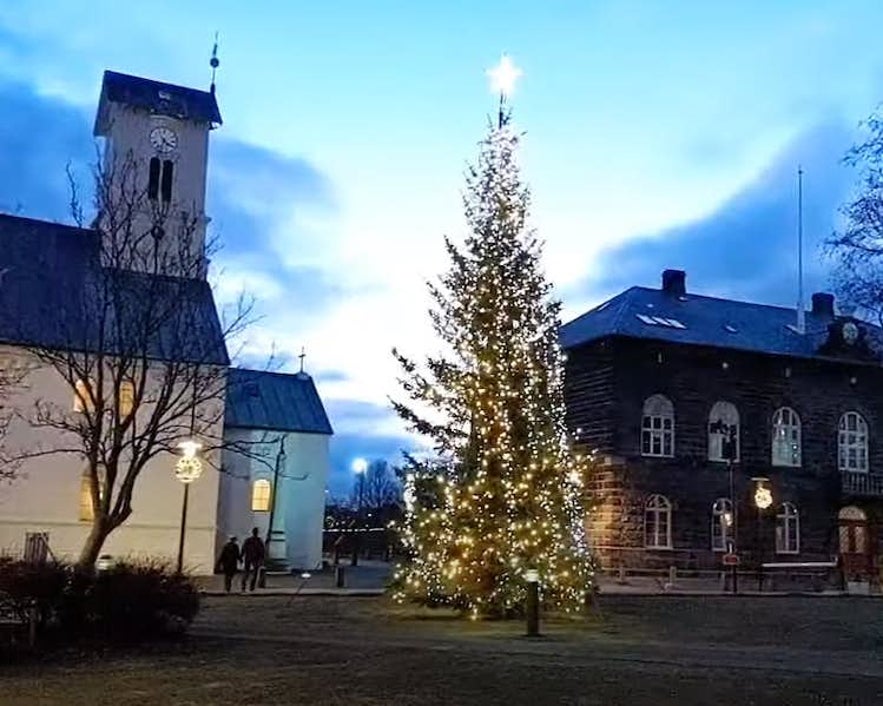
Photo from Christmas Walking Tour in Reykjavik
If you’re visiting Reykjavik in December, chances are you’ll want to know how the city celebrates Christmas. There are plenty of ways to enjoy the festive season here. The Christmas period in Iceland runs from around December 11, when the first Yule Lad arrives, through January 6, known as Þrettándinn (the Thirteenth Day).
Colorful lighting and decorations adorn the city at Christmas. Joining a Christmas walking tour is the best way to soak up the festive atmosphere and learn about Icelandic traditions.
There are also Christmas markets taking place throughout the season. You can browse locally made gifts and buy thoughtful presents for your friends and family back home.
Best Things To Do in Reykjavik in Winter in Bad Weather
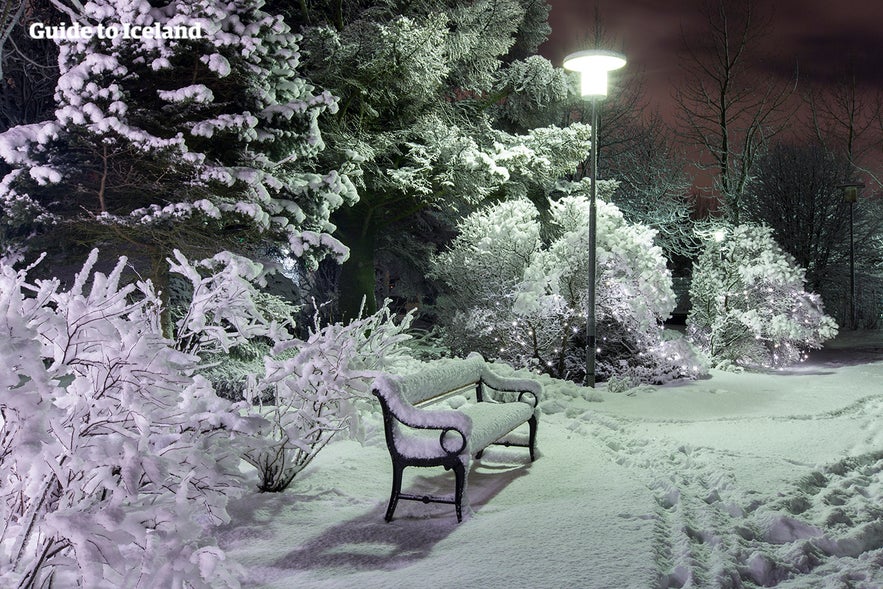 The weather can get rough during winter in Iceland, causing tour operators to cancel some outdoor activities. However, it shouldn’t deter you from exploring the best of Reykjavik. These indoor activities should make up for any canceled trips.
The weather can get rough during winter in Iceland, causing tour operators to cancel some outdoor activities. However, it shouldn’t deter you from exploring the best of Reykjavik. These indoor activities should make up for any canceled trips.
In addition to its various tourist attractions, Reykjavik is a culinary city. Many of its best restaurants serve delicious local produce, and there are several high‑end fine‑dining options for you to choose from.
From no‑frills hot dogs to exquisite Nordic menus, visitors are spoiled for choice. Alternatively, you can explore some of Reykjavik’s bars — sip your favorite wine or discover the city's craft beer scene.
Laugavegur, the city’s main shopping street, is where most travelers start when they want to hit the stores. However, if that isn’t enough shopping for you, head to the Kolaportið flea market (usually open on weekends), Kringlan shopping mall, or Smáralind shopping mall.
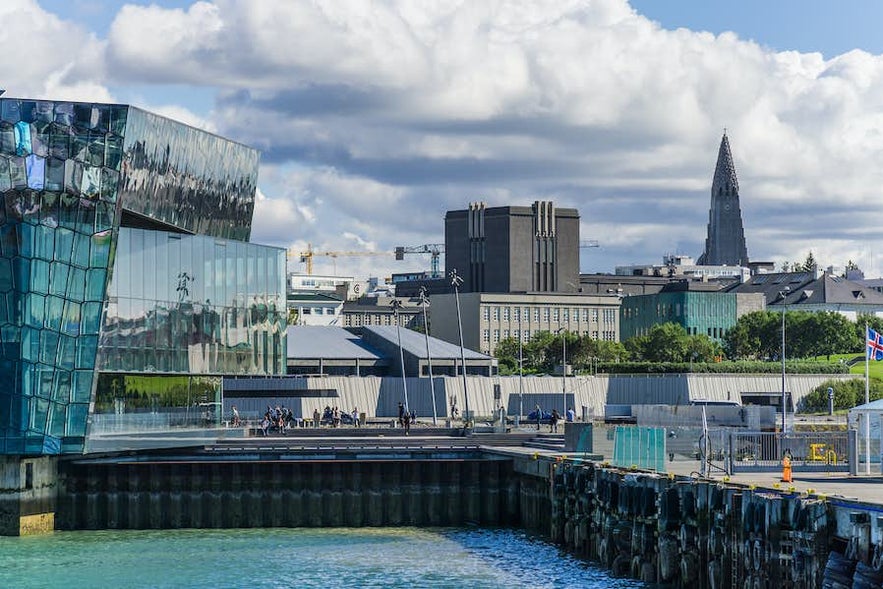
Photo from Guided Walking Tour of Reykjavik
Kolaportið is an indoor market selling everything from Icelandic delicacies to vintage clothes, books, jewelry, and lava rock souvenirs — a fun place to browse when it’s blustery outside.
Smáralind is the largest mall in the capital area, with a wide variety of shops, a cinema, and plenty of dining options. Kringlan is another large shopping center with an excellent selection of renowned labels. It also has a cinema and a library — perfect for relaxing with a movie or a good book to escape the cold.
Other cinemas in Reykjavik include Sambíóin, Smárabíó, and Háskólabíó. If you’re after something a little quirkier, visit the arthouse cinema Bíó Paradís, which shows a selection of independent movies.
Best Winter Attractions Near Reykjavik
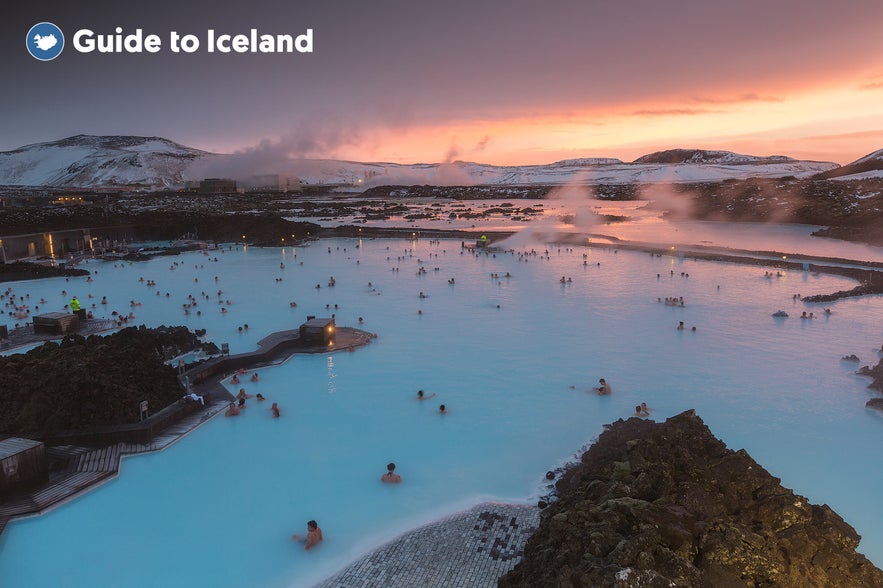
Reykjavik certainly has lots of attractions worth exploring, but you don’t have to restrict yourself to winter tours in the city. Reykjavik is within easy reach of several of Iceland’s most popular natural attractions, still accessible during winter.
The Blue Lagoon is Iceland’s most famous geothermal spa, known for its steamy blue waters and beautiful surrounding landscapes. The waters heat up to about 100 F (around 38 C) and are rich in sulfur and silica. Many believe these minerals to have beneficial properties. Due to ongoing volcanic activity on the Reykjanes Peninsula, the Blue Lagoon occasionally closes temporarily — check the latest status and book in advance.
The Blue Lagoon is close to central Reykjavik, just 31 miles (about 50 kilometers) from the city. However, you can opt for a Blue Lagoon transfer if you want to avoid the hassle of driving yourself.
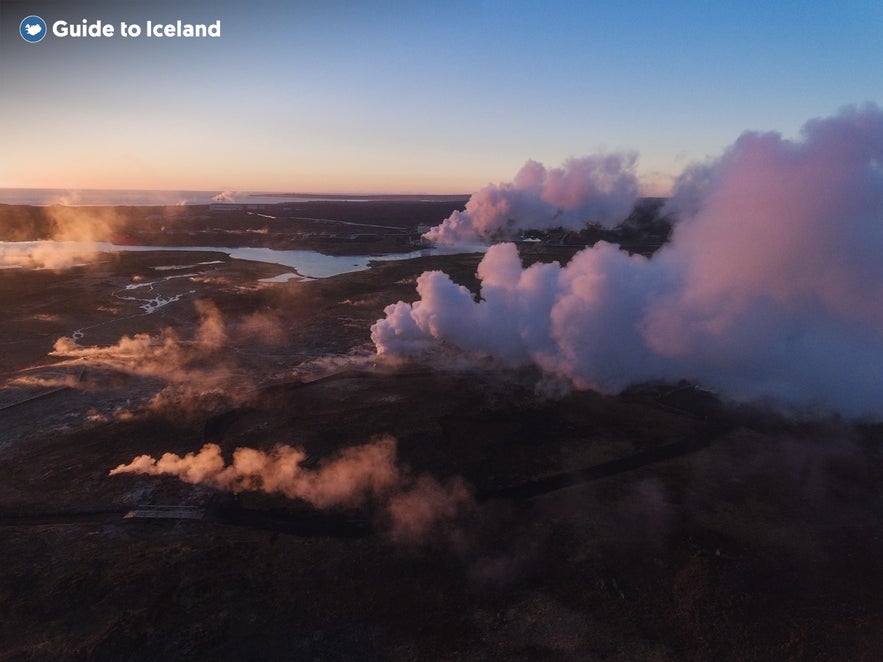
Alternatively, go on a day tour to Reykjanes. The Reykjanes Peninsula, where the Blue Lagoon is located, greets most visitors upon landing in Iceland because Keflavík International Airport is just a few miles away. Its moss‑covered lava fields are especially atmospheric in winter. Conditions and access can change quickly here in periods of volcanic activity, so always follow local guidance and travel with a reputable guide when advised.
A day trip to the Golden Circle is another way to explore some of Iceland’s most iconic landmarks. It’s a 190‑mile (roughly 305‑kilometer) route of Iceland’s most famous attractions: Thingvellir National Park, the two‑tiered Gullfoss waterfall, and the bubbling pools at the Geysir geothermal area.
A Golden Circle tour is a great way to explore these spectacular places while learning more about Iceland’s cultural history.
The South Coast of Iceland is home to some of the country’s most gorgeous waterfalls, glacier lagoons, black‑sand beaches, and epic hiking trails. Your first stop should be at Seljalandsfoss or Skógafoss, two of the best‑known waterfalls in Iceland.
Seljalandsfoss is one of the few waterfalls you can walk behind. It has utterly breathtaking views, especially on a sunny day. Just don’t forget to bring your waterproofs!
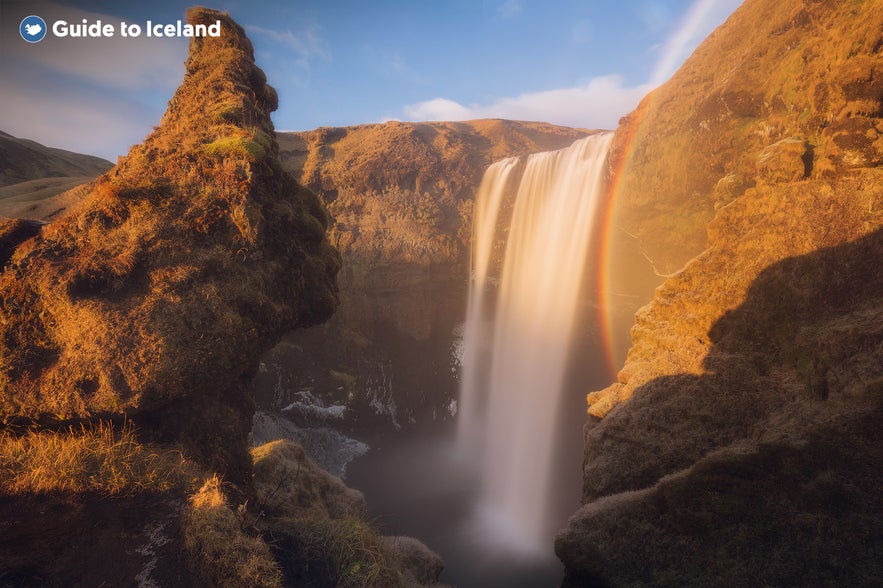 Next, proceed to Skógafoss waterfall. You can pull up to it right from the Ring Road itself, so it's easy to visit even if you're hiring a car and traveling around Iceland independently. The waterfall is also accessible through the Skóga trail, which starts at Skógafoss and follows the Skóga River for five miles (about eight kilometers).
Next, proceed to Skógafoss waterfall. You can pull up to it right from the Ring Road itself, so it's easy to visit even if you're hiring a car and traveling around Iceland independently. The waterfall is also accessible through the Skóga trail, which starts at Skógafoss and follows the Skóga River for five miles (about eight kilometers).
A shorter South Coast tour will take you down to Reynisfjara and back. A longer South Coast tour is a great way to discover other sights around the South Coast, like the Jökulsárlón glacier lagoon and the Reynisfjara black‑sand beach. Both tours include a transfer from Reykjavik, so you won’t need to worry about getting there alone. At Reynisfjara, always heed the warning signs and keep a generous distance from the water, as powerful sneaker waves can occur year‑round.
Located on Iceland’s western coast, the Snaefellsnes Peninsula boasts some of the country's most dramatic landscapes, glaciers, waterfalls, and fishing villages. It’s often referred to as "Iceland in miniature" due to its spectacular scenery and culture. It’s a great place to go on a solo trip, but you can also take a Snaefellsnes tour if you want to visit the area as a group.
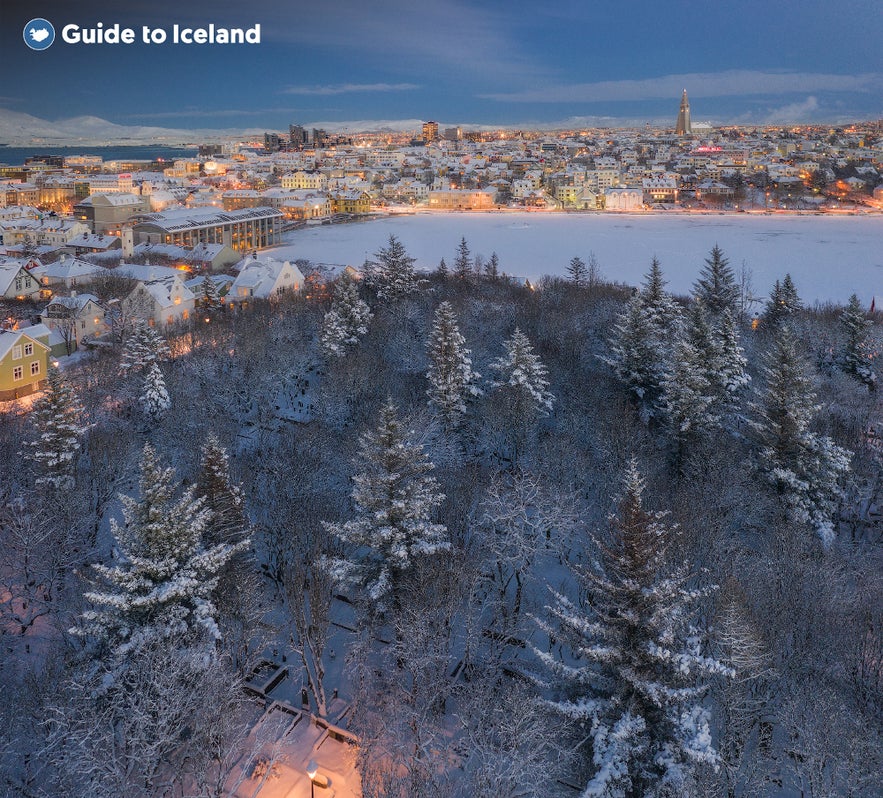
Practical Winter Tips for Reykjavik
- Dress in layers with a warm hat, gloves, and waterproof outerwear; use ice grips for shoes when sidewalks are icy.
- Build flexibility into your plans — weather can change quickly and may affect tours and road access.
- Book popular experiences (Sky Lagoon, Blue Lagoon, northern lights tours) in advance, especially around holidays.
- Plan driving in daylight and keep evenings for culture, cuisine, pools, and live music.
Reykjavik is a fantastic city to visit during winter because there's so much to see and do that isn’t dependent on the weather. If you want to catch a glimpse of the famous aurora borealis, enjoy the festivities over Christmas, or discover some cultural activities, you'll be able to do it all in Reykjavik.


